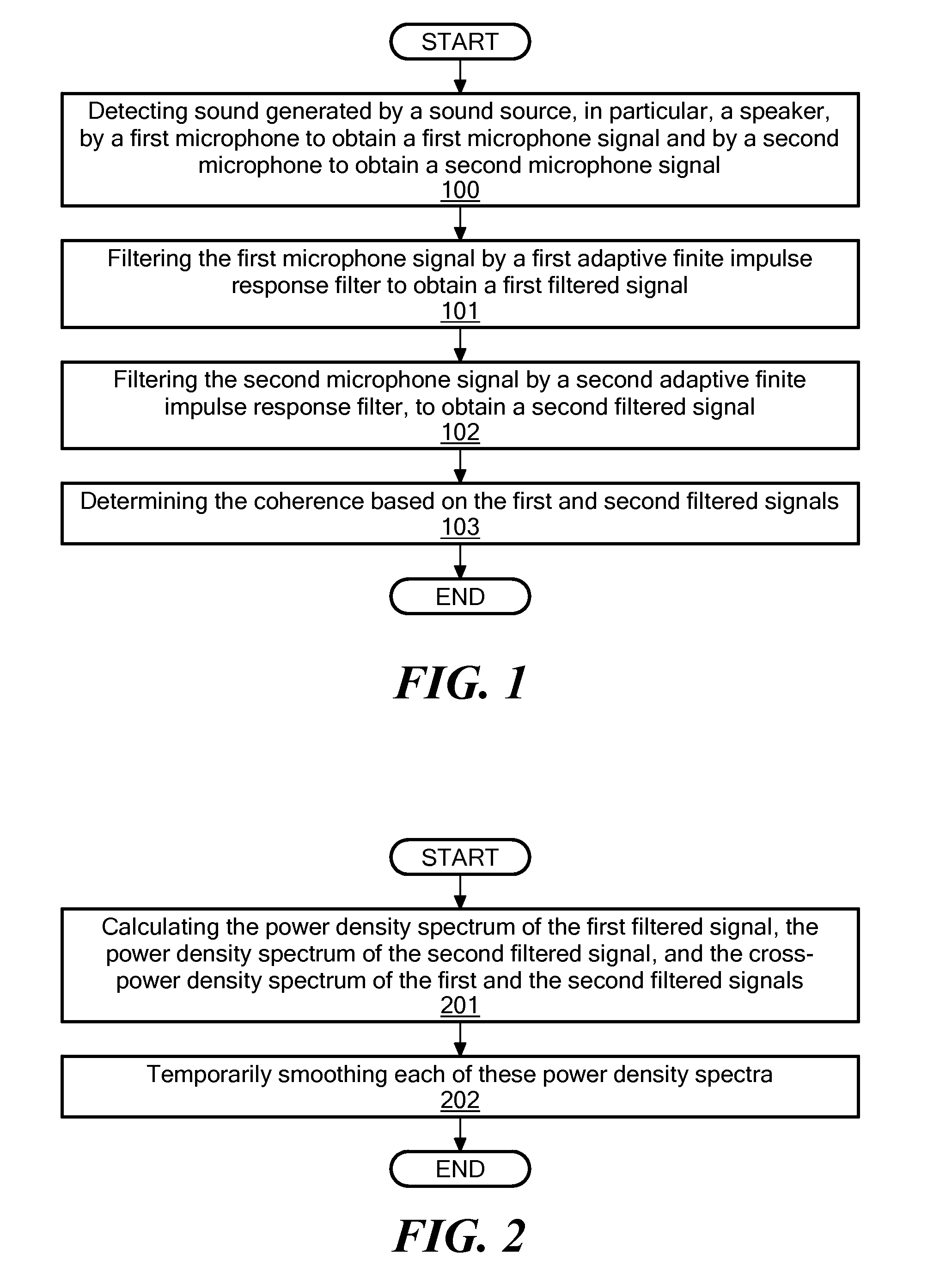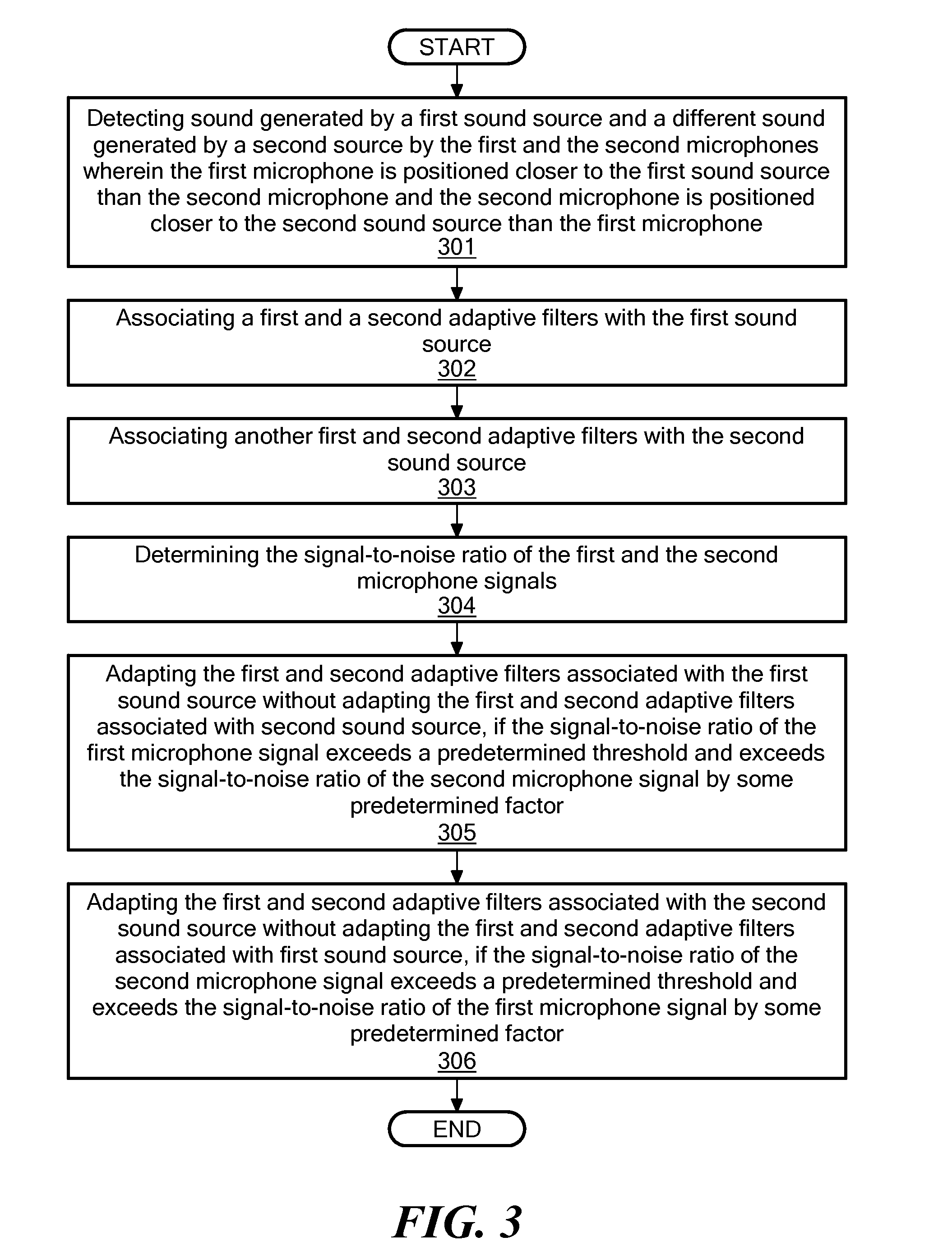Determination of the coherence of audio signals
a technology of coherence and audio signals, applied in the field of speech signal processing and the determination of the coherence of microphone signals, can solve the problems of inability to reliably inability to detect speech, and inability to accurately estimate the coherence of the signal,
- Summary
- Abstract
- Description
- Claims
- Application Information
AI Technical Summary
Benefits of technology
Problems solved by technology
Method used
Image
Examples
Embodiment Construction
[0022]The disclosed methodology can be embodied in a computer system or other processing system or specialized digital processing system as computer code for operation with the computer system / processing system / specialized digital processing system. In particular, the methodology may be employed within a speech recognition system within an automobile or other enclosed location. The computer code can be adapted as logic (computer program logic or hardware logic). The hardware logic may take the form of an integrated circuit, (e.g. ASIC), or FPGA (fixed programmable gate array). The computer code may be embodied as a computer program product comprising a tangible computer readable medium that contains the computer code thereon. Thus, the methodology disclosed in the detailed description with the provided mathematical equations should be recognized by one of ordinary skill in the art as adaptable without undue experimentation into computer executable code. The computer code may be writ...
PUM
 Login to View More
Login to View More Abstract
Description
Claims
Application Information
 Login to View More
Login to View More - R&D
- Intellectual Property
- Life Sciences
- Materials
- Tech Scout
- Unparalleled Data Quality
- Higher Quality Content
- 60% Fewer Hallucinations
Browse by: Latest US Patents, China's latest patents, Technical Efficacy Thesaurus, Application Domain, Technology Topic, Popular Technical Reports.
© 2025 PatSnap. All rights reserved.Legal|Privacy policy|Modern Slavery Act Transparency Statement|Sitemap|About US| Contact US: help@patsnap.com



